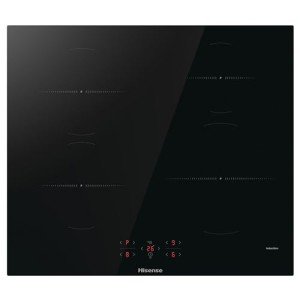The Reasons Induction Hob Tips Is More Difficult Than You Think
Induction Hob Guide: A Comprehensive Overview
Induction hobs have emerged as a popular choice for modern kitchens, transforming the method individuals prepare. This guide will offer an extensive look at what induction hobs are, how they work, their advantages and drawbacks, and considerations when buying one.
What is an Induction Hob?
An induction hob is a kind of cooktop that uses electromagnetic energy to heat pots and pans directly, instead of cooking through a flame or by warming the surface area of the cooktop. This innovation is becoming increasingly popular within both residential and commercial kitchens due to its performance and safety features.
How Does an Induction Hob Work?
The principle behind induction cooking counts on electro-magnetic induction. Here's how it works:
Electromagnetic Field: When the induction hob is turned on, it produces an electromagnetic field beneath the cooktop surface.
Product Response: If a ferrous (magnetic) product pot or pan is put on the hob, the electromagnetic field causes currents in the cookware.
Heat Generation: These induced currents produce heat straight in the pot or pan, cooking the food inside. Induction Hob Features stays cool to the touch since it is not being heated straight.
Advantages of Using an Induction Hob
Induction hobs feature a multitude of benefits:
Energy Efficiency: Induction cooking is extremely effective as nearly all the energy produced is transferred directly to the pot or pan, resulting in much faster cooking times.
Safety: The surface area of the induction hob remains cooler, reducing the risk of burns. Furthermore, induction hobs turn off automatically when cookware is eliminated.
Accurate Temperature Control: Users can easily adjust the heat settings, offering much better control over cooking temperature levels.
Easy to Clean: Because the induction hob itself does not get exceedingly hot, spills are less most likely to burn onto the surface, making cleaning a breeze.
Modern Aesthetics: Induction hobs usually come in sleek, flat designs that fit well in modern cooking areas, improving the total aesthetic.
Disadvantages of Induction Hobs
While there are many advantages, it is likewise important to consider some disadvantages:
Cost: Induction hobs are often more costly than standard gas or electrical cooktops.
Cookware Compatibility: Specialized cookware is needed; just ferrous pots and pans will deal with induction hobs, indicating some pots and pans may need to be changed.
Noise: Some users report a buzzing or humming sound when using induction cooking, particularly at high settings.
Power Limitations: Induction hobs might require particular electrical setups and can not be used with standard outlets if they have high power requirements.
Key Features to Consider When Buying an Induction Hob
When thinking about acquiring an induction hob, it's important to assess numerous aspects to ensure you make the very best option for your kitchen area.
Function
Description
Size
Pick a design that fits your cooking area space and fulfills cooking needs (2-5 burners).
Power Output
Search for greater wattage for quicker heating but make sure compatibility with your power supply.
Control Type
Choose between touch controls or knobs, based on your preference for ease of use.
Security Features
Look for automatic shut-off, child locks, and residual heat indicators.
Design
Choose a style that complements your cooking area decor— consider an integrated versus a countertop.
Warranty
Confirm the warranty used— longer service warranties recommend better product guarantee.
FAQ
Can I use any pot or pan on an induction hob?
No, only pots and pans made from ferrous metals, such as cast iron or some stainless-steel, will work on induction hobs. Aluminum, glass, and copper cookware are not suitable unless they have a magnetic base.
How does induction cooking impact cooking times?
Induction cooking is typically faster than gas or electrical cooking, as it directly heats up the pots and pans and not the cooktop. Most users report substantial time cost savings when boiling water or cooking meals.
Is induction cooking safe for kids?
Yes, induction hobs are thought about safe for children. The primary surface area remains cool, and the hob instantly changes off when pots and pans is gotten rid of, reducing the danger of burns or fire.
Do induction hobs need special electrical setups?
Some induction hobs may need a dedicated electrical outlet in order to work effectively, specifically those with higher power output. It is important to speak with an electrical contractor if you are not sure.
Induction hobs represent a considerable development in cooking technology, delivering efficiency, speed, and safety advantages over standard cooking methods. While there are factors to consider to bear in mind, such as cost and cookware compatibility, the benefits can outweigh the downsides for lots of users. As home cooking continues to develop, induction hobs make sure to be at the leading edge of modern culinary technology.
Whether you are a cooking beginner or a knowledgeable chef, understanding how induction hobs work and what to search for when acquiring one can considerably boost your cooking experience. By weighing the advantages against the downsides and considering your particular requirements, you can make an informed choice that will elevate your cooking to brand-new heights.
